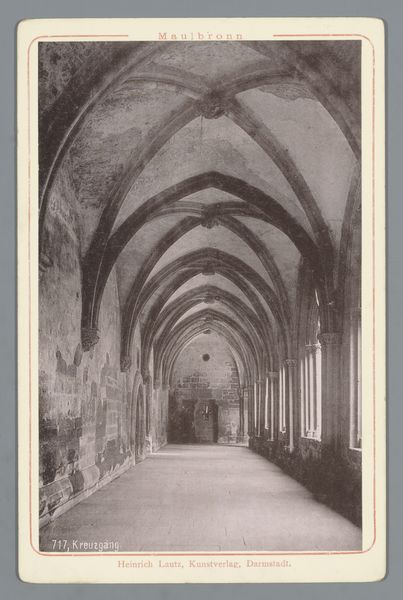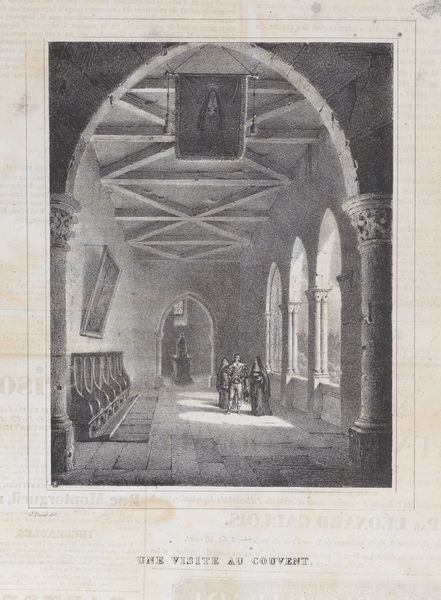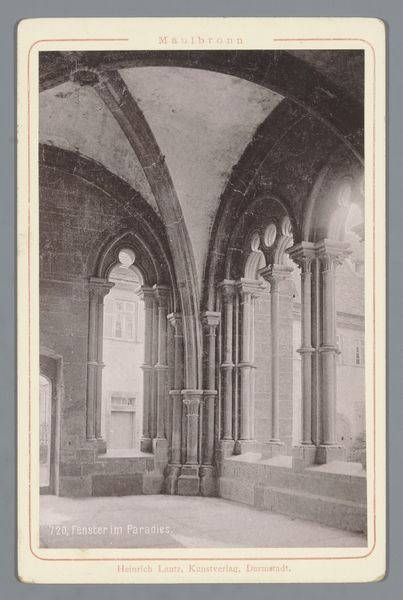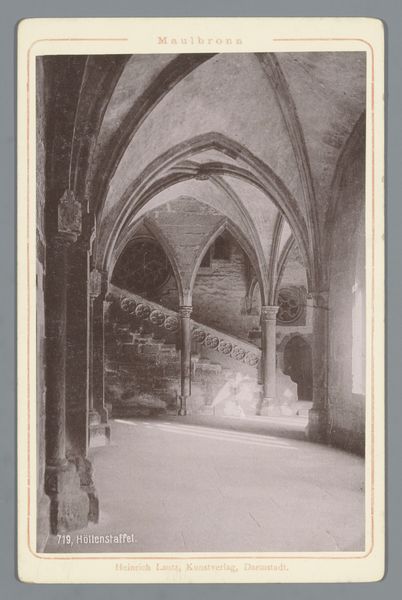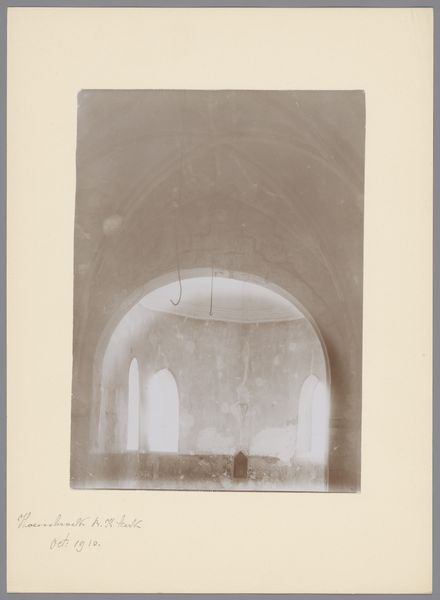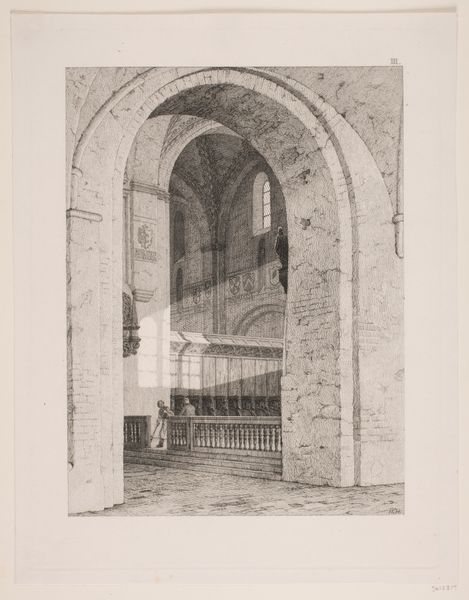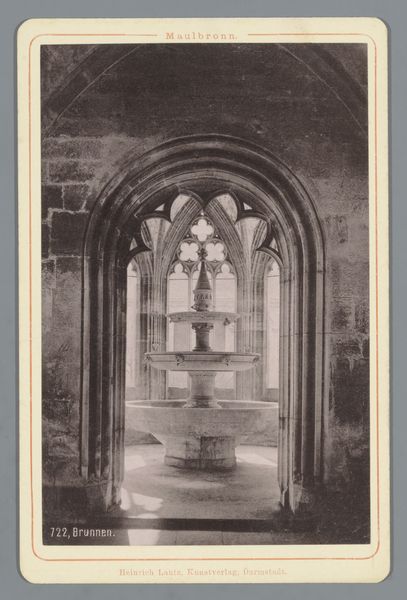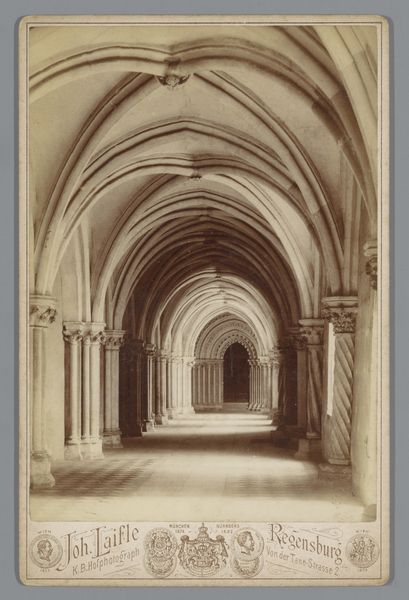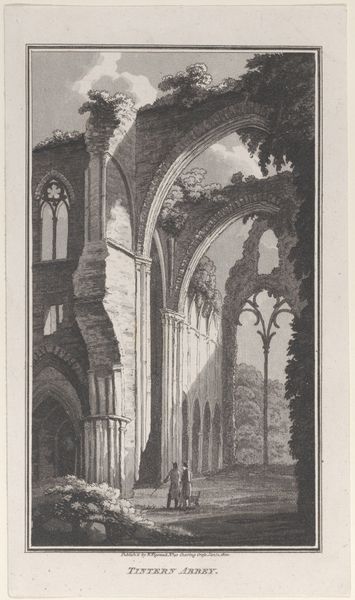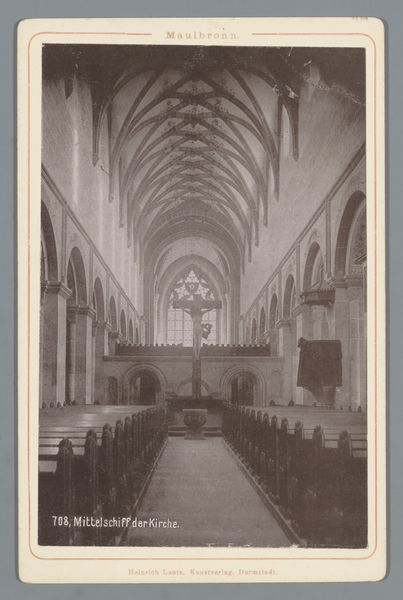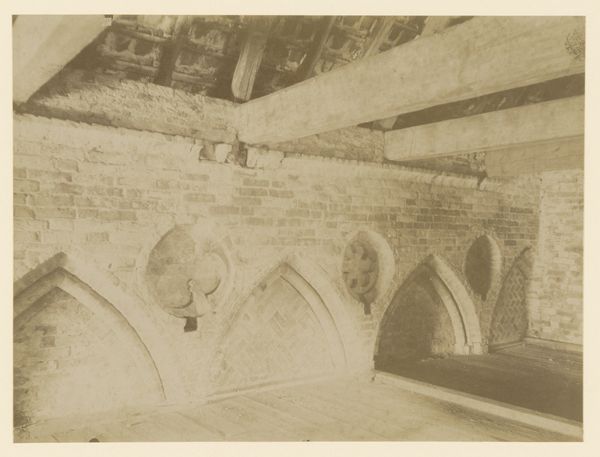
photography, architecture
#
medieval
#
landscape
#
photography
#
geometric
#
architecture
Dimensions: height 146 mm, width 97 mm
Copyright: Rijks Museum: Open Domain
Curator: This captivating image, titled "Slaapzaal in de Abdij van Maulbronn," or "Dormitory in Maulbronn Abbey," dates from around 1895 to 1900 and is an anonymous photograph of the abbey's architecture. Editor: Striking. The geometry pulls you in, all those converging lines. But it also feels somber, stark even, doesn't it? The high, arched ceiling gives it such a sense of austere grandeur. Curator: The photograph allows us to consider the labor that went into such a place. The precise placement of each stone block. One can see that a lot of labor was used to shape the vault. What are we supposed to take away from that in relationship to this type of photograph? Editor: Right. Monasteries were powerhouses of artistic and intellectual production in their time. And this photo freezes that moment—a period of renewed interest in the medieval, perhaps tinged with nostalgia, viewed through the lens of burgeoning photographic technology and commercial networks that circulate them. Think of the consumption of such imagery. It speaks to the growth of both cultural heritage tourism and photographic reproductions at the turn of the century. Curator: I am curious how the geometric aspect of the image connects to the monastic lifestyle that occurred there and the architecture as an image of a form of "ascetic beauty." Editor: That interplay between geometric severity and potential ornamentation is fascinating, though. See the diamond pattern in the vaulted ceiling? There's a human touch breaking up the otherwise rigid order. And those shadowy patches on the wall hint at previous adornments, narratives long faded. It makes me consider that monasteries were key sites of power, where religious ideals could intersect with both the earthly ambition and social control, shaping the perception and consumption of history. Curator: And here, photographed decades later, is the lasting footprint of that process—that legacy in turn circulated, bought, and sold in printed photograph. The chain of making. Editor: A chilling space made more real with photography. Gives us lots to consider regarding the role of institutional, social, and labor context when creating a building that then becomes reproduced. Curator: Precisely. An interesting contrast, isn't it, considering what it means to immortalize the human condition and social standing inside something such as architecture.
Comments
No comments
Be the first to comment and join the conversation on the ultimate creative platform.
